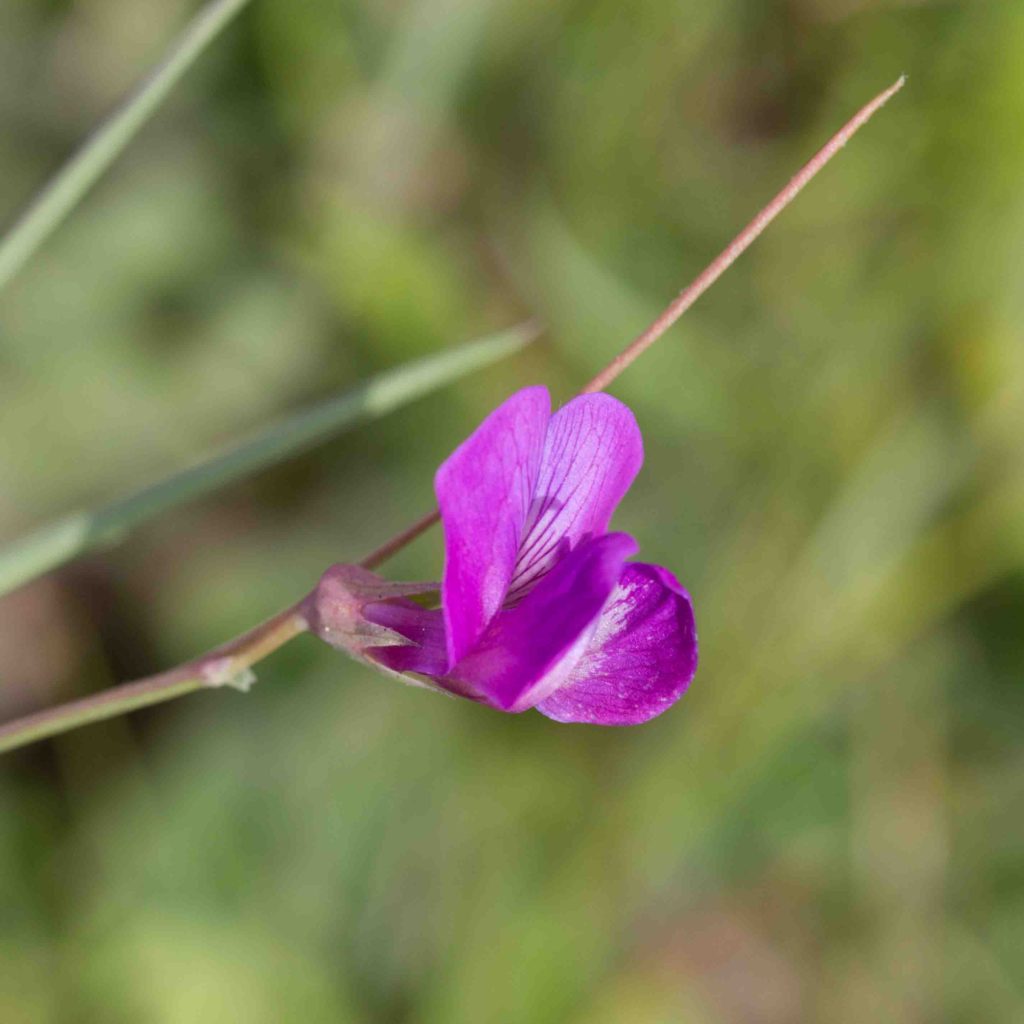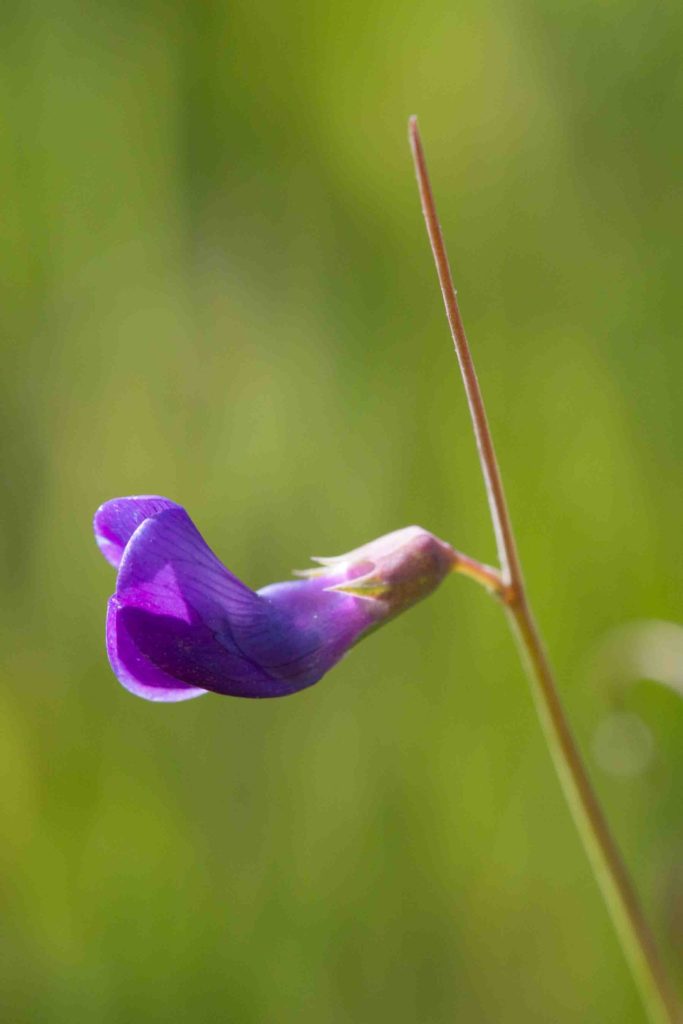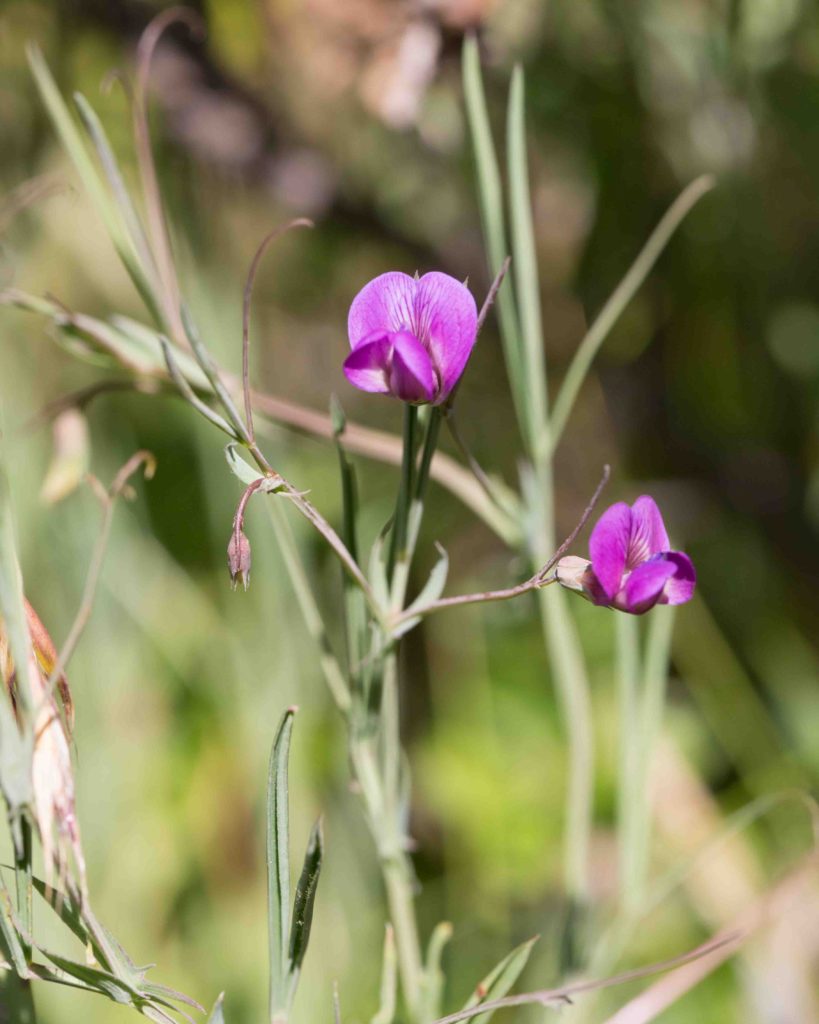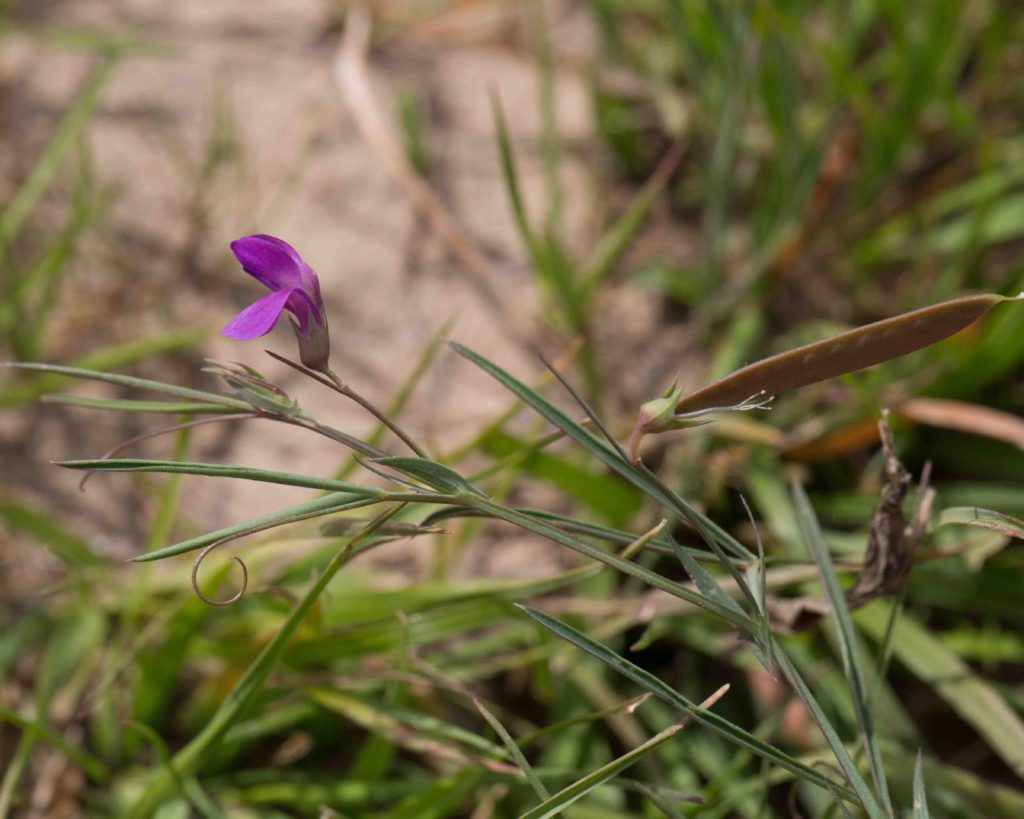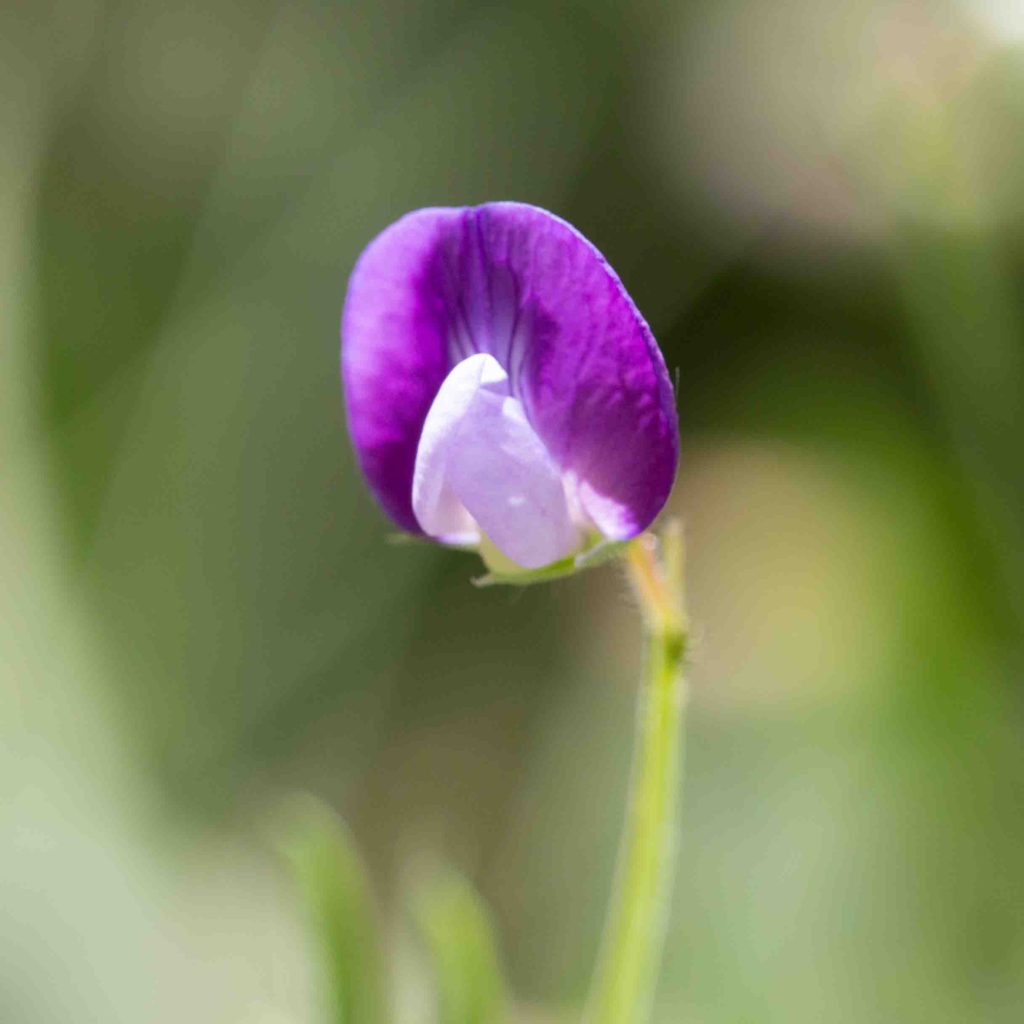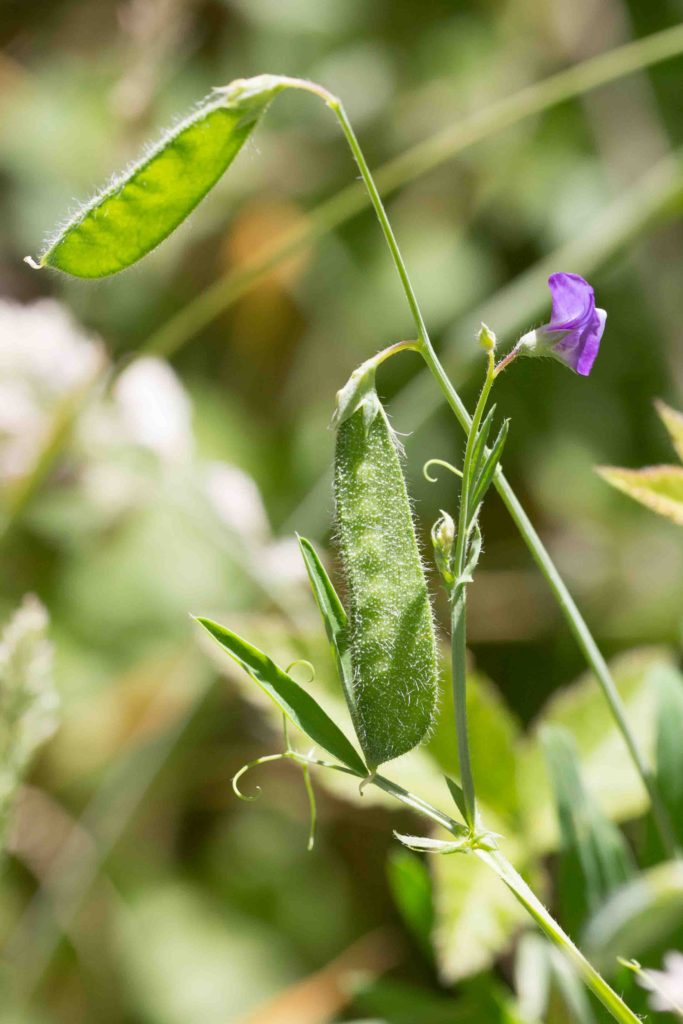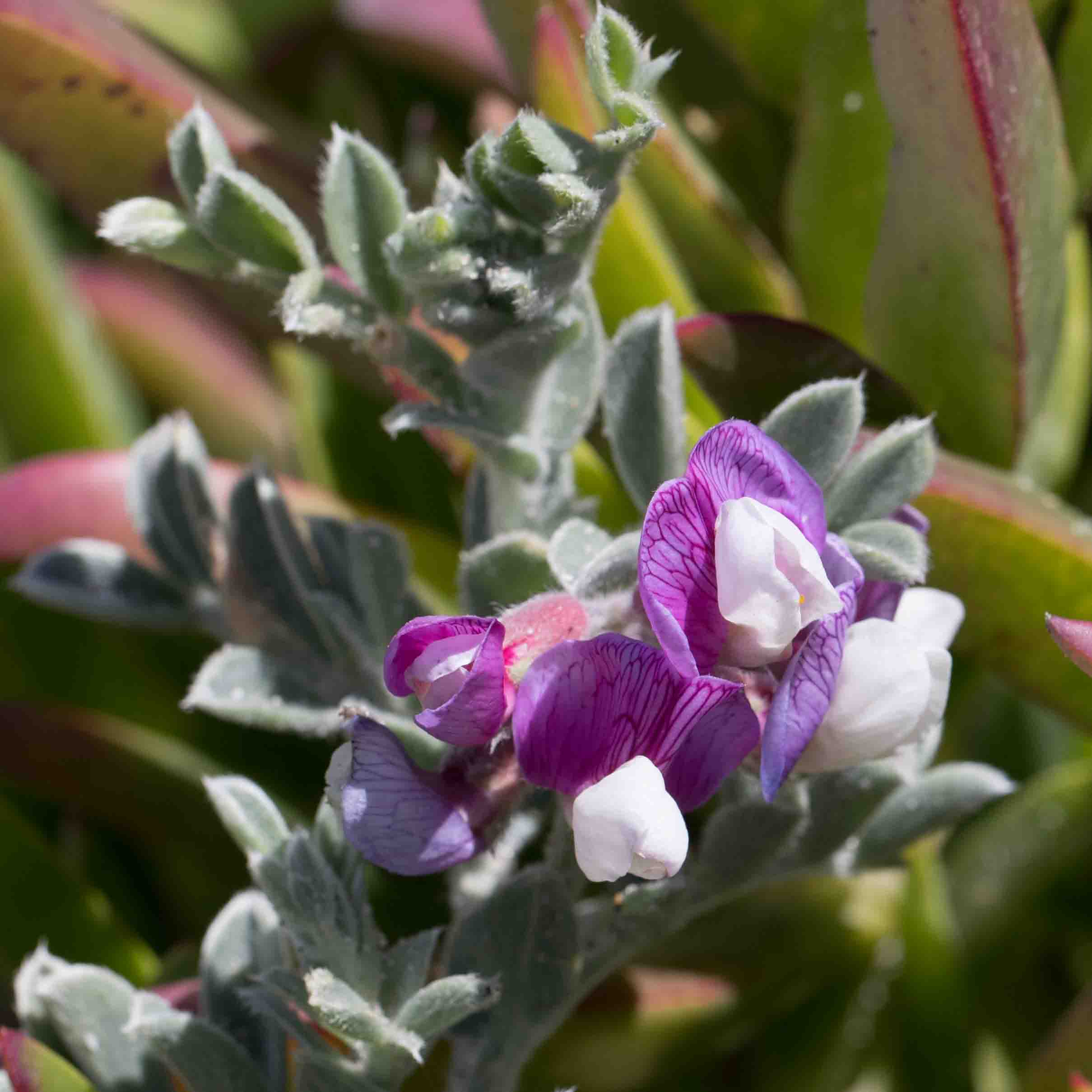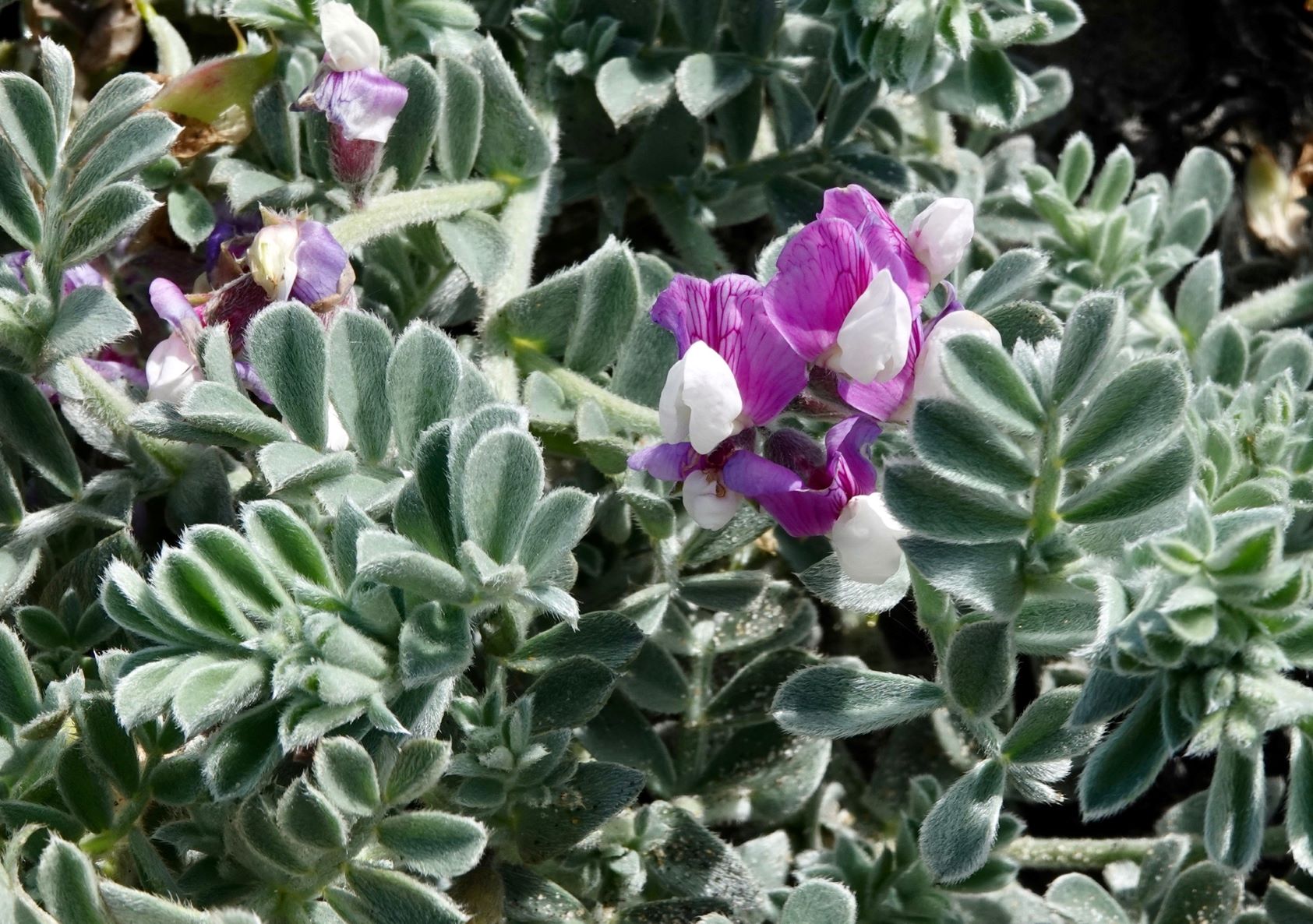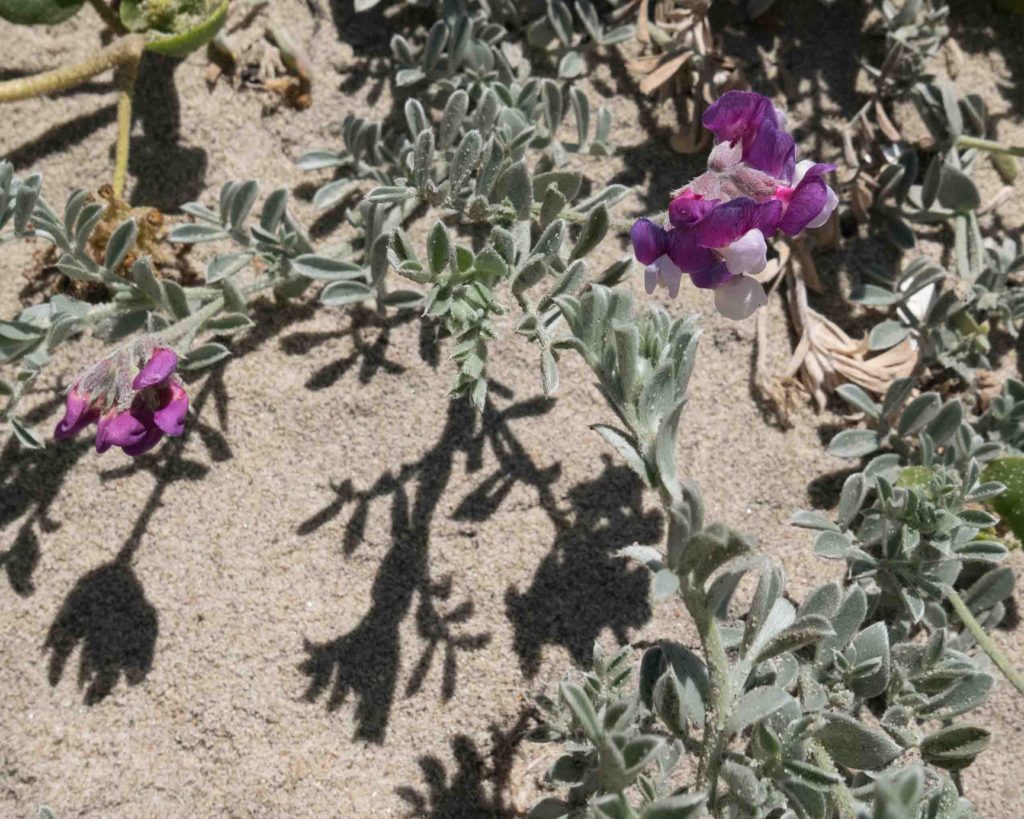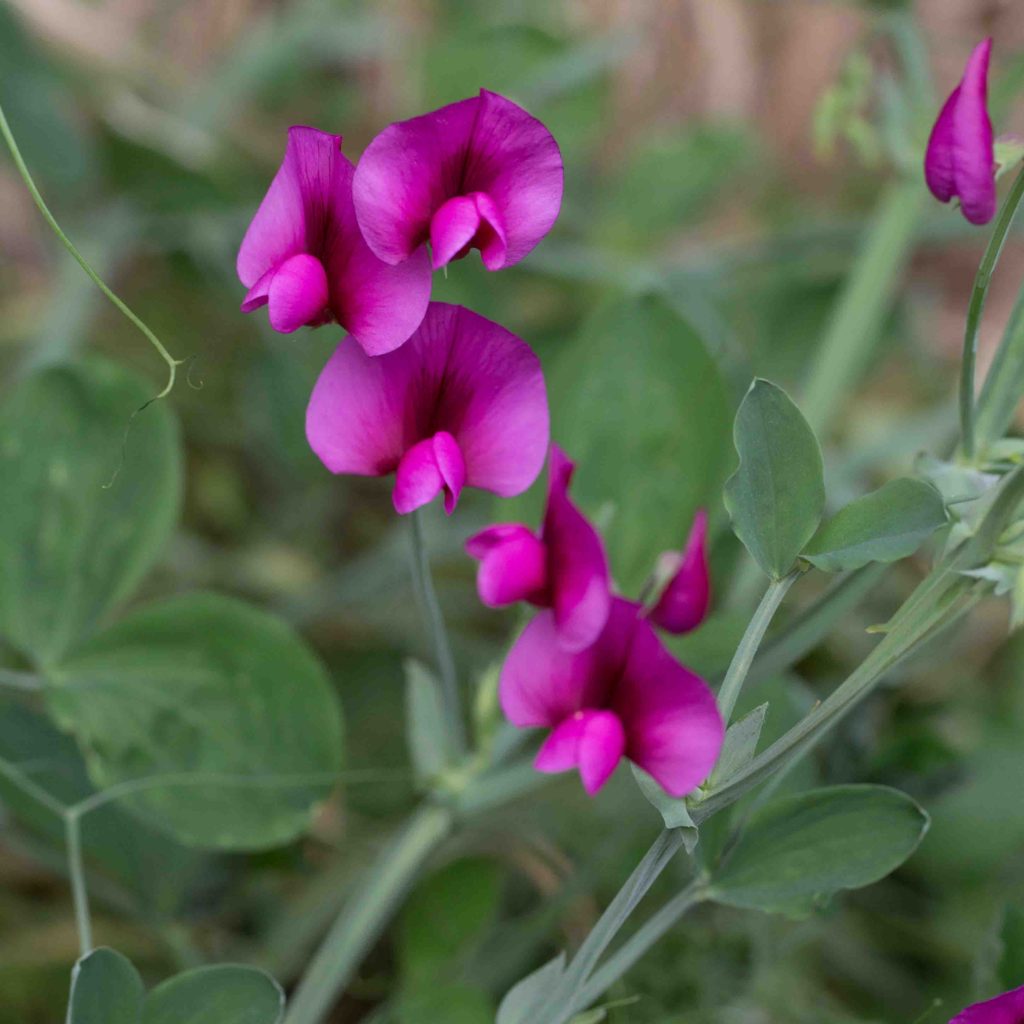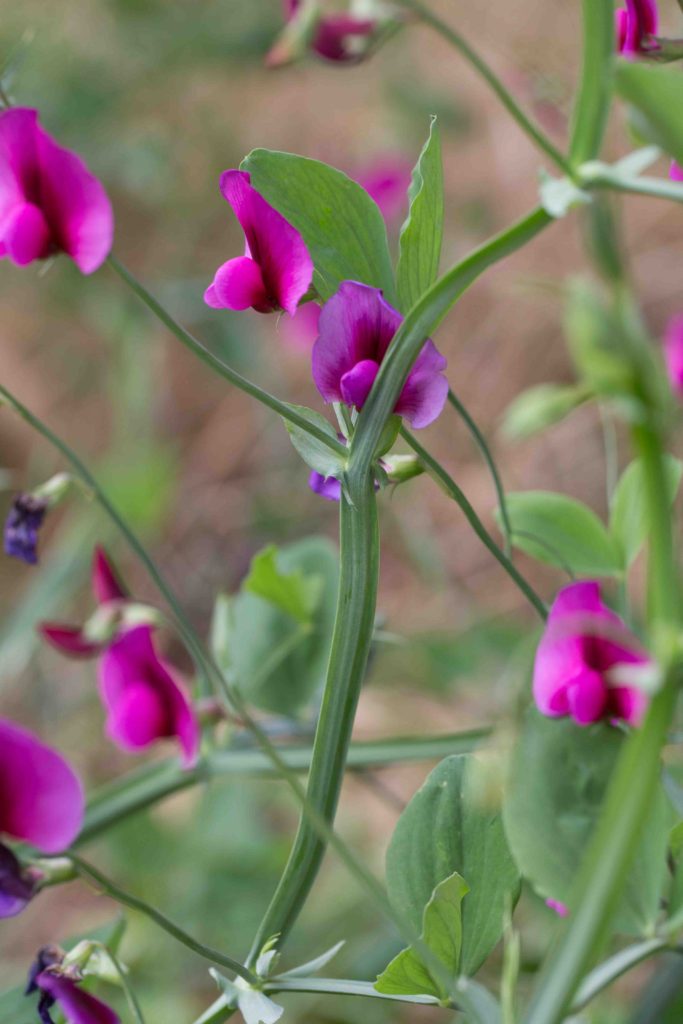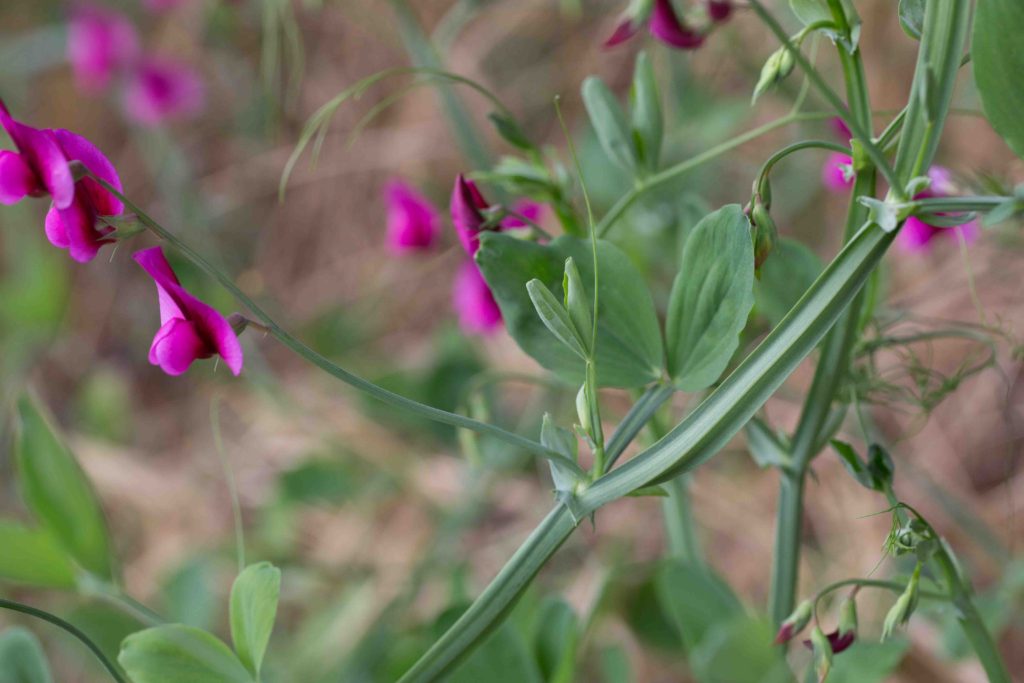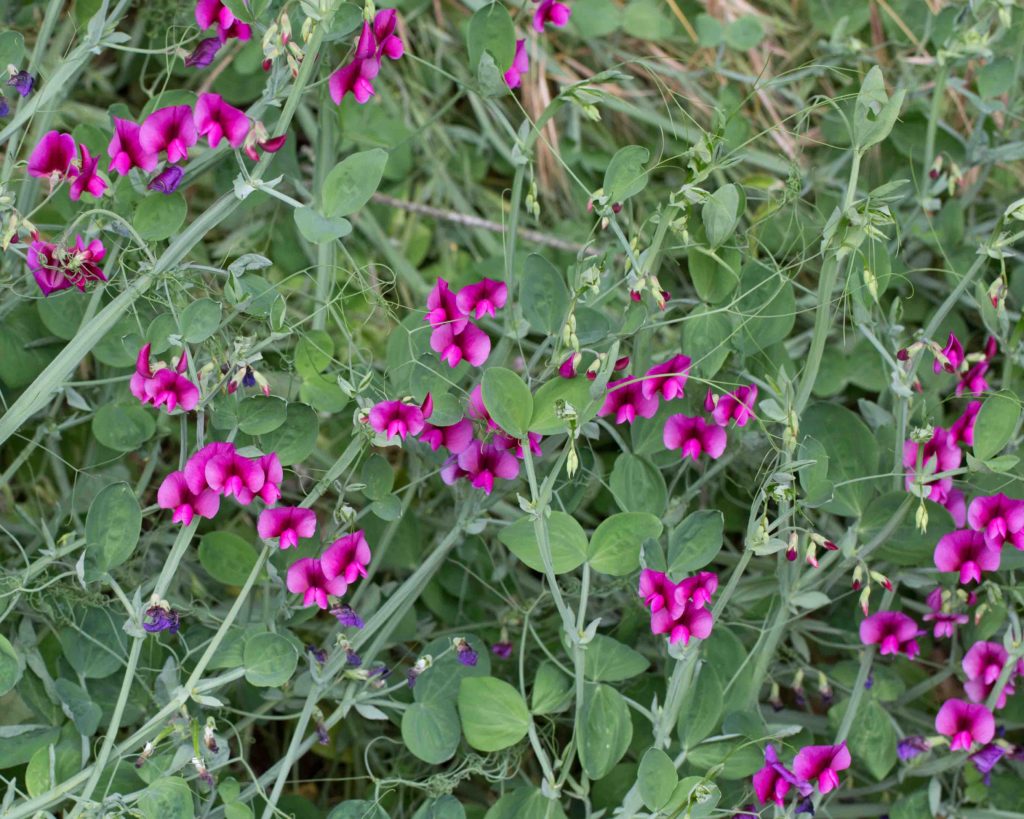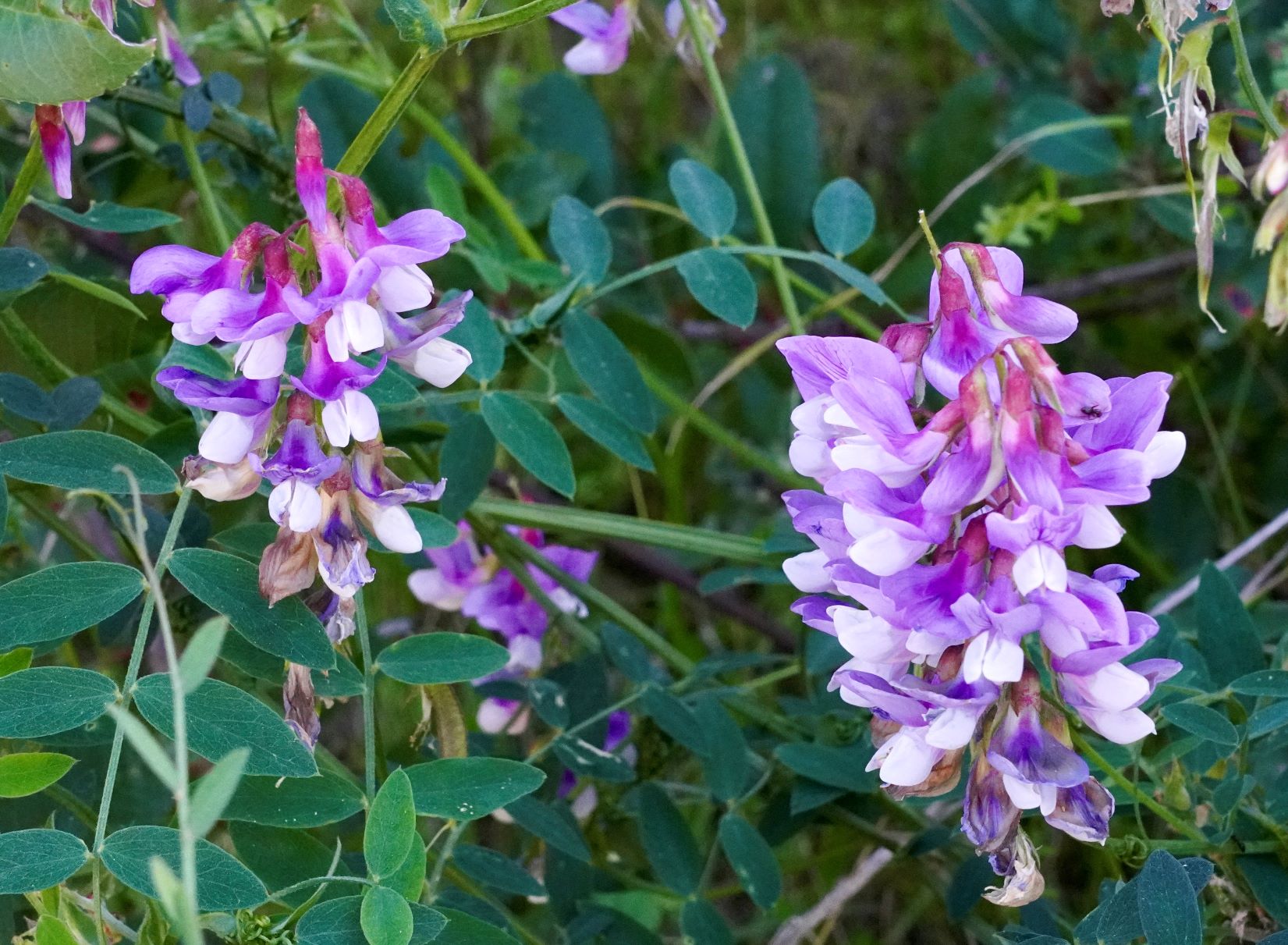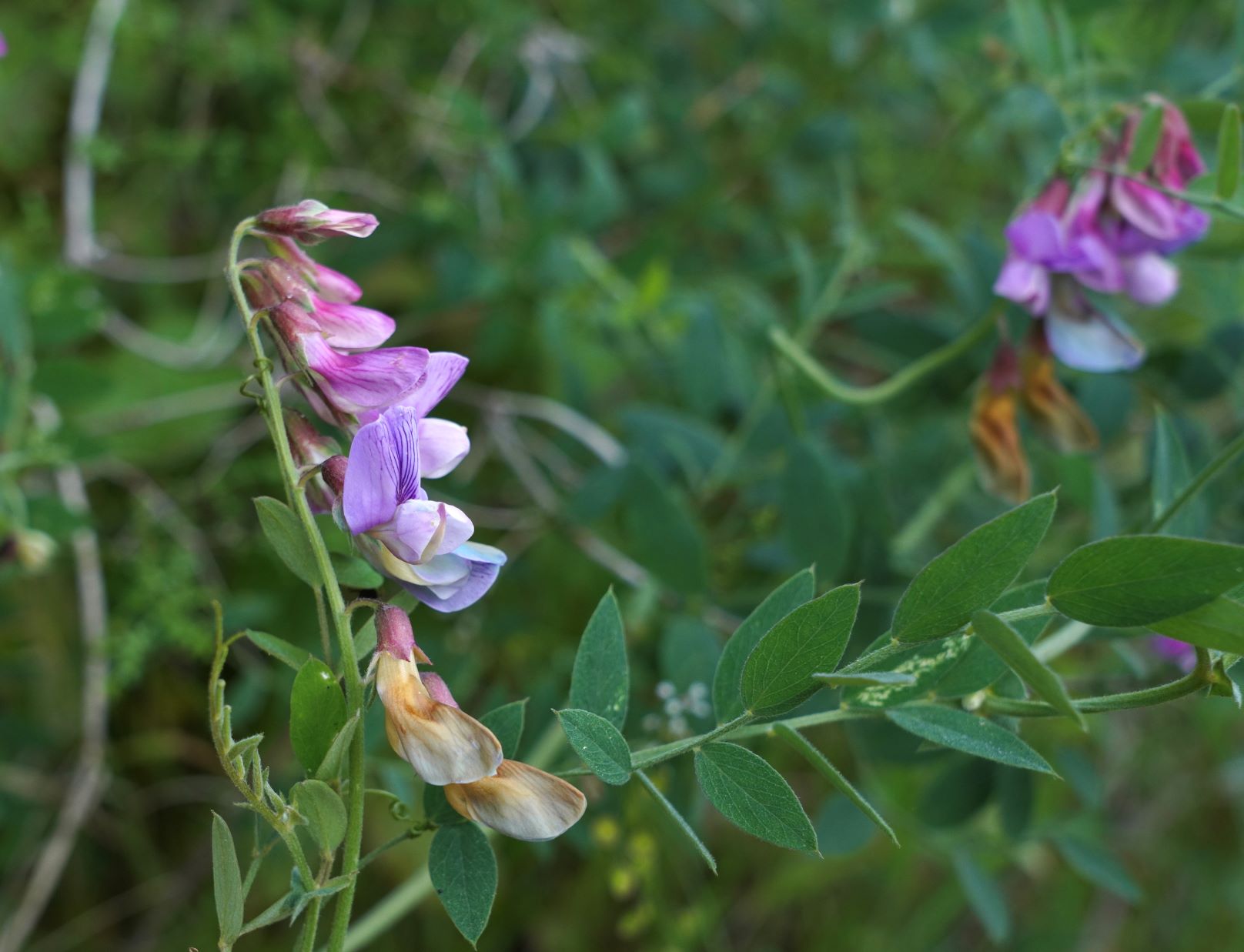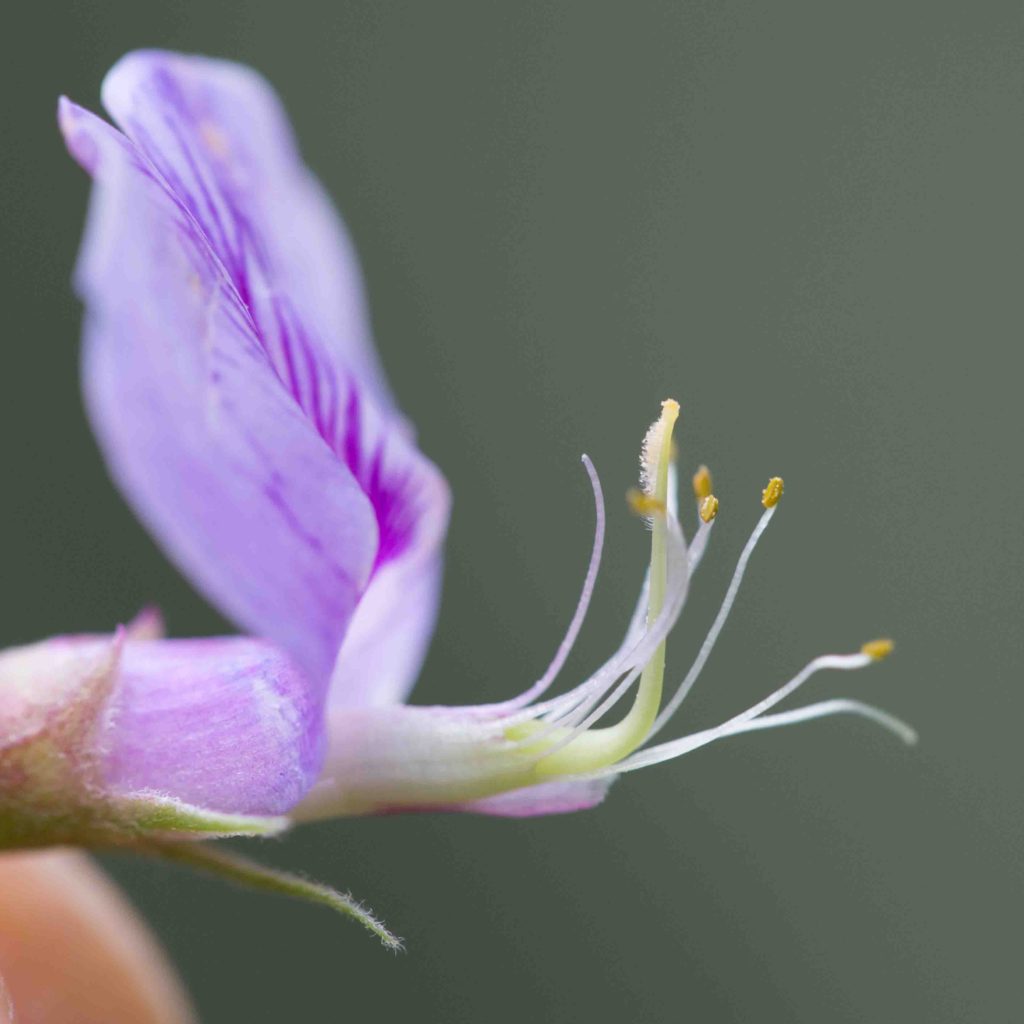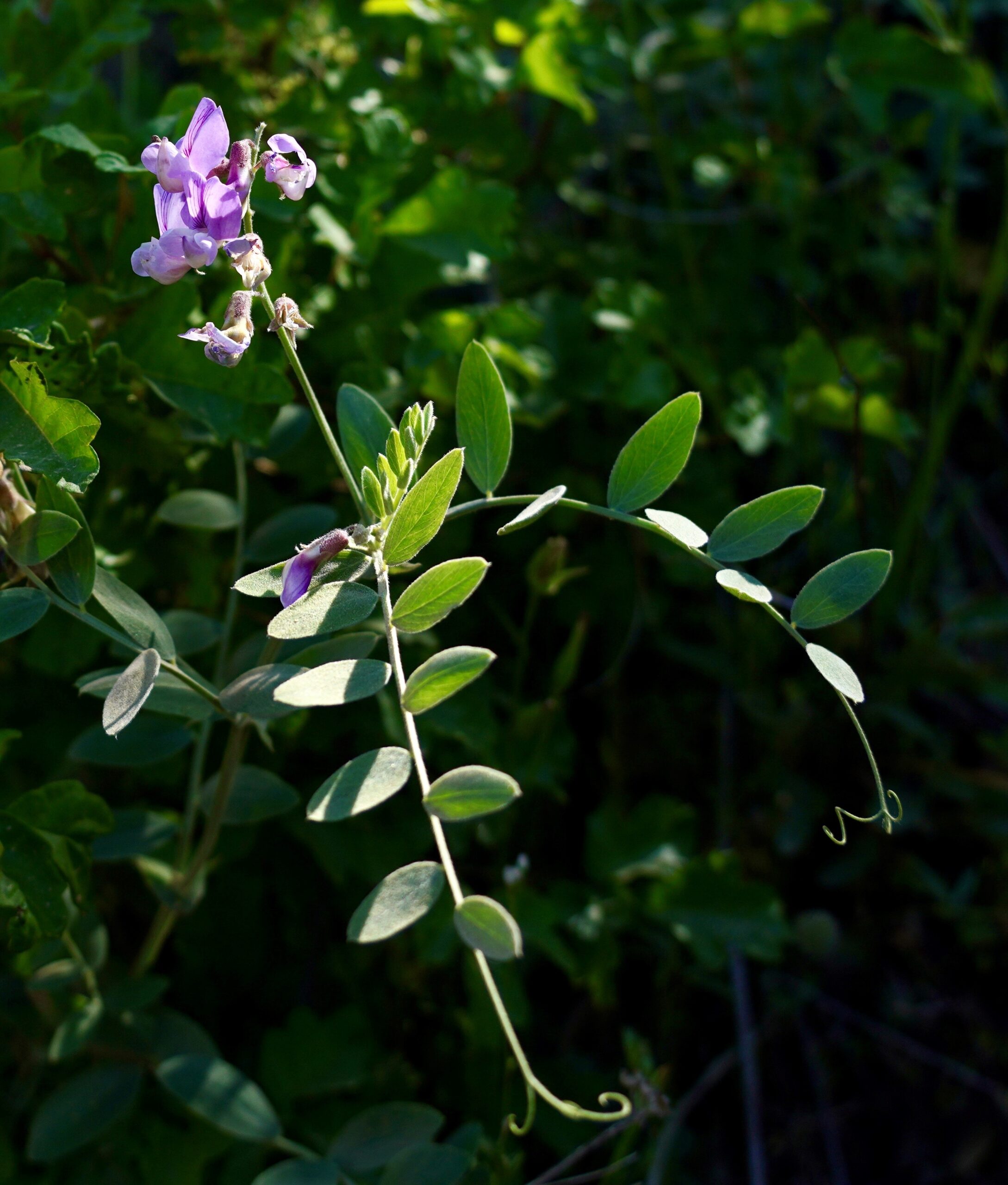Fabaceae: Pea Family — Lathyrus (Pea)
The pea family has 5-petaled flowers, consisting of a wide upper banner petal, two wing petals, plus two lower petals which are fused to form a boat-shaped keel. Many produce heads or spikes, consisting of multiple individual flowers (examples are lupines and clovers). The seed pod is generally a “legume”. This is a long, flattish pod, swollen by the seeds, and splitting lengthwise along both the top and bottom.
Angled Pea – Lathyrus angulatus
Blooms:
Apr–June
Plant Height:
20–30 cm
Flower Size:
Small
Origin:
Europe
Habitat:
Disturbed places
Notes:
This is a glabrous annual, distinguished by its single lavender or purple flower. The flower is near the top of the stem, which continues beyond the flower as a sharp bristle. Leaves have 2 leaflets, 2–6 cm long, threadlike to narrowly lanceolate. Fruits are glabrous, about 2 x the length of the flower.
Caley Pea – Lathyrus hirsutus
Blooms:
May–Aug
Plant Height:
1–3 m
Flower Size:
Small
Origin:
Eurasia
Habitat:
Disturbed or wet places
Notes:
The flowers of Caley Pea are similar to Angled Pea (Lathyrus angulatus, see above). However, it has 1–2 flowers, pink, blue or bicolored, on a winged stem which does not extend beyond the flower. Leaves have 2 narrow leaflets, 3–6 cm long. Fruits have hairs with bulbous bases. Often cultivated, uncommon in the wild.
Silky Beach Pea – Lathyrus littoralis
Blooms:
Apr–June
Plant Height:
10–60 cm
Flower Size:
Medium
Origin:
Native
Habitat:
Coastal dunes
Notes:
This low-growing plant is distinguished by its habitat (strictly coastal dunes), and by the silvery, silky appearance of its small leaflets. Unlike Common Pacific Pea (Lathyrus vestitus, see below), it has only 4–8 leaflets, each one having a short, bristle-like tip. Flowers are white to purple. Photo #2 by CJH.
Tangier Pea – Lathyrus tingitanus
Blooms:
Apr–July
Plant Height:
< 2 m
Flower Size:
Large
Origin:
Mediterranean
Habitat:
Escape from cultivation, coastal areas
Notes:
This a sprawling or climbing plant with a prominently winged stem and 1–3 large crimson to maroon flowers. Leaves have 2 leaflets, 2–6 cm, lanceolate to widely ovate. Often cultivated, occasionally found in the wild.
Common Pacific Pea – Lathyrus vestitus var. vestitus
Blooms:
Feb–June
Plant Height:
Climbing
Flower Size:
Medium
Origin:
Native
Habitat:
Woodland, chaparral margins, roadsides
Notes:
This is a common climbing or sprawling plant, with clusters of pale lavender to purplish flowers. After the older flowers wither, they turn brownish but remain on the stem. Leaves have 8–16 leaflets, linear to elliptic. Note the unusual flattened style, with hairs concentrated on one side of the tip, like a miniature toothbrush. Note also the simple stipules. The style and the stipules help distinguish this species from American Vetch (Vicia americana). Photos #1,2 and 4 by CJH.
